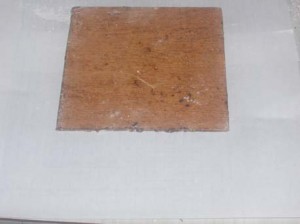Control of small hive beetle
Interesting research was undertaken on the use of diatomaceous earth as an in-hive control on small hive beetle by NSW Department of Primary Industries (Tamworth office) in 2008 which found:
The use of diatomaceous earth to control adult Small Hive Beetle (SHB) has been used in the past by some beekeepers and there is anecdotal evidence to support varying degrees of success. However there has not been sufficient scientific investigation for the NSW Department of Primary Industries to broadly promote this method of SHB control. NSW department of Primary Industries welcomes feedback on the usefulness of the technique in the field and encourages all beekeepers who use this method to contact their local Livestock Officer Bees and advise of the success or otherwise.
Introduction
The device is used inside the beehive on the bottom board with the purpose of reducing numbers of adult small hive beetles (Aethina tumida) inside the hive. Available information suggests that damage from larval stages of SHB is more likely to occur when there are large numbers of adult SHB present inside the hive. The success of this device is based on its use in a 12 hive apiary over 3 years with damage from SHB larvae being observed in the honey supers of 2 hives only. A large number of nucleus, single and multi-storied hives were overcome by SHB larvae during this period in hives in nearby apiaries. All apiaries were situated in the Richmond area, NSW. Insecticide diatomaceous earth, without additives, has been approved by the Australian Pesticides and Veterinary Medicines Authority (APVMA) for control of
SHB inside beehives with this control method.
Control agent diatomaceous earth is used to control adult SHB. It is a naturally occurring chalk-like sedimentary rock easily crumbled into an offwhite abrasive powder. It consists of the fossilised remains of diatoms which are hard shelled algae. It is necessary to use the insecticide form of diatomaceous earth without any additives and not a formulation containing a toxic insecticide. Formulations of diatomaceous earth available for filtration or cat litter are not suitable for use as an insecticide.
Diatomaceous earth behaves as an insecticide by the fine abrasive powder penetrating the soft tissues of the skeleton and by absorbing fats from the waxy outer
layer of the skeleton, both causing the insect to dehydrate. The typical chemical composition of diatomaceous earth is 86% silica, 5% sodium, 3% magnesium and 2%
iron. Diatomaceous earth kills insects by mechanical means without the use of toxins and may be acceptable for use in hives by producers of organic bee products.
Beekeepers are advised to check with their organic auditors on the acceptability of use of diatomaceous earth inside beehives.
Device construction
Materials
- One piece of three ply or similar thin material not able to be destroyed by bees, approximately 15 cm square.
- Insecticide diatomaceous earth (high quality diatomaceous earth without additives)
- Water based wood glue
- Masking tape, 1 cm wide
- 1 x craft stick (11 cm x 1 cm x 2 mm)
- 2 x 5 cm paint brushes
Method
- Glue a craft stick along one edge of the plywood on its under surface to provide a 2mm riser. This provides a space for adult SHB to crawl under the plywood and
- come in contact with its lower surface and prevents access by honey bees.
- Place masking tape around the four edges of the under surface. This provides a border free from diatomaceous earth which prevents bees in the hive coming
- into contact with the diatomaceous earth with their mouthparts.
- Place water based wood glue on the lower surface of the three ply and spread evenly with a paint brush.
- Place diatomaceous earth about 0.5 cm thick on the wet glue and press into the glue with a dry paint brush to provide a
- thick coating of diatomaceous earth. Allow to dry.
- When dry, brush off loose diatomaceous earth. Remove the masking tape.Use
Use
The device is placed inside the hive on the bottom-board supported on the 2 mm craft stick. Adult SHB will cluster under the device. The diatomaceous earth is required
to be applied in a thick coat, forcing the SHB to move through the diatomaceous earth and coming into contact with it.
One application of diatomaceous earth should last one season. At the end of each season the devices are removed from hives, cleaned and recoated in preparation for the following season. Care should be taken not to spread American foulbrood disease (AFB) between colonies with this device, e.g. irradiate devices at the end of each season.
Glue a 2mm riser stick along one edge of the under-side. Masking tape is used to keep the edges free from glue. Glue is applied evenly over the surface.
Diatomaceous earth applied as a thick coat
Diatomaceous earth pressed into glue with a clean brush.
Finished device with masking tape removed and surplus diatomaceous earth brushed off.
Position of device on bottom board inside hive, diatomaceous earth side facing down.
DE FineGrit is best suited for this application.






